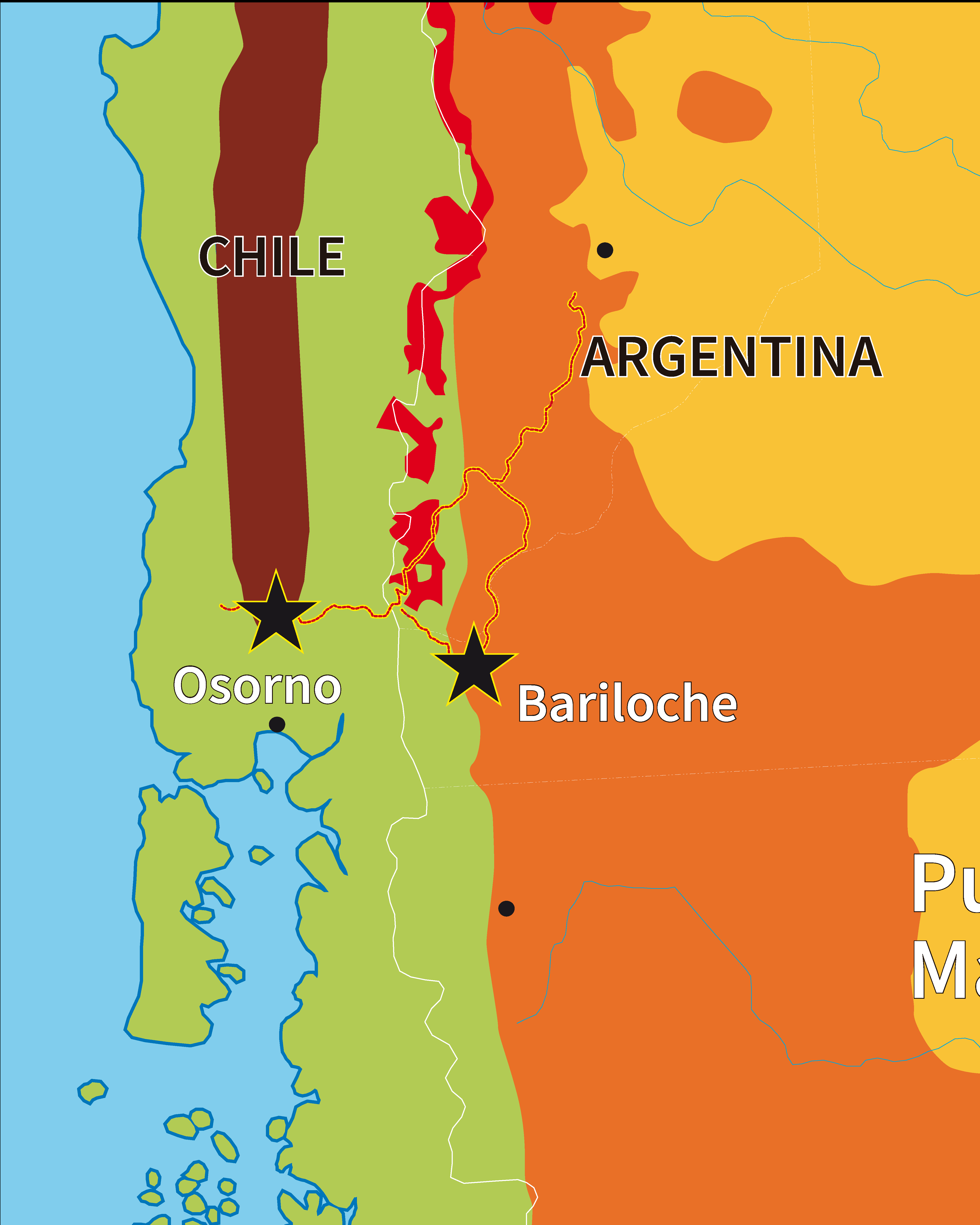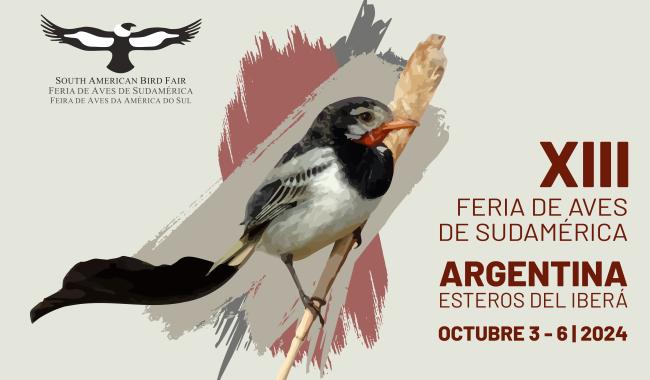
We have designed this itinerary as the only possible combination to visit in a single trip the 7 natural regions of Patagonia. In one tour and traveling around only 540km.
Patagonia has 7 natural regions to explore: Subantarctic forest, Patagonian Steppe, Monte Region (endemic to Argentina), High Andes, Southern Wetlands, Central valley of Chile and the southern cone Coast.
There are also 4 types of forest: the Patagonian Cypress forest, the Araucaria forest -only seen here-, the typical Southern Beech forest (Nothofagus sp.), and the cold Valdivian Rainforest. This itinerary is the only one that allows us to see them all.
In its Lakes District, Patagonia presents the greatest biological diversity, and there is no other possible trip where all its natural ecosystems can be connected, as you can see in the map. Within 500km we can explore 90% of the 400 bird species and all the diversity the area has to offer.
This itinerary allows us to look for birds, as well as unique mammals, cultures, and landscapes that still remain untouched.
Day 0
Arrival in Buenos Aires, welcome dinner and rest after the trip. Night in Buenos Aires.
Day 1
In the morning we will take a flight to Patagonia, arriving in Neuquén (1200 km from Buenos Aires). There, at the entrance of Patagonia, we’ll go birding through the scrub environment in a natural region called “Monte”. And see the first Patagonian species, such as Austral Thrush, Burrowing Parrot, Tufted-Tit-Tyrant or Black-faced Ibis.
After lunch we'll leave through the Monte, birding and looking for typical species like Lesser Rhea, White-throated Cacholote and Elegant-crested Tinamou.
We'll Arrive in Zapala, surrounded by arid environments. During the afternoon we’ll visit places around to find the most common birds there, such as Chiguanco Thrush and Upland Goose.
Night in Zapala.
Day 2
A full day in this small Patagonian city, where we'll bird in some lakes around, with a lot of highlights such as Chilean Flamingo, Red Phalarope, Austral Negrito, Black-necked Swan, Silver Grebe, Double-banded Plover and Creaste Duck.
Night in Zapala.
Day 3
This morning we will cross from the Monte towards the Patagonian Steppe and head south towards the Collón Cura Valley. This valley will be one of the most bird-populated points. Including Rusty-backed monjita, Variable Hawk, Many-colored Rush-Tyrant or Band-tailed Eremobius. Picnic in Collón Cura. In the afternoon, we'll have opportunities for the Andean Condor.
It will be a day of many kilometers but with many stops and new species (a total of 250 km).
Night around Junín de los Andes (with upgrade option in a Lodge in an Estancia).
Day 4
From there we’ll go inside the National Park to find one of the most ancient forests of the world. Still alive from jurassic times, the Monkey-puzzle Tree (Araucaria) forests still survive in a small area, protected by the original people of Patagonia: the Mapuches. We’ll visit this area and learn about the first species of the forest, including the Great Shrike-Tyrant, Chilean Swallow and Austral Parakeet.
Night in San Martín de los Andes.
Day 5
We’ll stay around town. In the morning we’ll visit Rosales Lake to meet Thorn-tailed Rayadito, Chilean Pigeon and Ashy-headed Goose, and in the afternoon we'll go up to Chapelco Hills, where we'll find amazing views at the top of the mountain and many birding opportunities, including Des Mur’s Wiretail, Magellanic Woodpecker and several ground-tyrants. We'll also look for the first Patagonian Tapaculos.
Night in San Martín de los Andes.
Day 6
In the morning we’ll visit a local reserve, a wetland with species such as Cinnamon Teal, Wren-like Rush-Bird and several species of herons and wader birds.
After lunch, we'll leave the city through "7 Lakes" road, birding in the dense forest, habitat of the Magellanic Woodpecker, heading to Villa La Angostura, a picturesque town on the shores of Lake Nahuel Huapi.
Night in Villa La Angostura.
Day 7
We'll take the international road, crossing The Andes through one of the most beautiful crossings to Chile: Puyehue Path, and take a direct road to the pacific coast. This day we will have a long journey of 220 km and our point of arrival will be Bahia Mansa, a small fishing village, still unknown to tourism. On the trip we’ll look for the Chilean Mockingbird, the Slender-billed Parakeet and the new species at the other side of the Andes.
Night in Pucatrihue, at the sea coast.
Day 8
Birding in the coast, at 3 different places: Maicolpué, Bahía Mansa and Pucatrihué. Sea conditions permitting, we will try to go offshore to view seabirds: several species of cormorants, oystercatchers, gulls, boobies and pelicans. This is a nesting area of two Penguin species: Magellanic and Humboldt Penguins.
If conditions allow us, we’ll try to make an oceanic trip.
Night in Pucatrihue.
Day 9
We will return to the central valley, on the west side of the Andes Mountains, still in Chile, to reach Puyehue National Park, where the Temperate Rainforest is located. There we can see 4 species of Tapaculos, the Patagonian Sierra Finch and the White-throat Treerunner in a magnificent forest where it is possible to walk.
This is a very active volcanic zone, the fire belt of South America. A possible extra activity will be to take a Thermal Bath, either outside or inside.
Night in Puyehue.
Day 10
The environment of this National Park is unique in Patagonia, with a very humid cold forest and the opportunity to see the most remote species of the forest. After lunch, we will go uphill to the top of the mountains. If the day allows us, perhaps we can see the ring of fire of the active volcanoes, and walk in a crater in search of the Yellow-bridled Finch and Plumbeous Finch, among Miners and Ground-Tyrants.
Night in Puyehue.
Day 11
Crossing again the Andes, during the morning, and arriving to have lunch at Villa La Angostura. Bordering the shores of Lake Nahuel Huapi, with Steamer-Ducks and Silver Grebes, heading to the city of Bariloche. In the afternoon we’ll try to find the Bicolored Hawk and the Plain-mantled Tit-Spinetail. We’ll be a day of dramatic landscapes and we’ll be able to stop everywhere we want.
Night in Bariloche.
Day 12
We will have another opportunity to ascend the mountain, and take advantage of the ski resort (closed at this time) to use the lifts and try to reach some of the high restaurants (where we’ll have lunch). Depending on the month, it could be snowy, and depending on the conditions it may or may not be possible to walk. In any of the situations, we will be able to find the high altitude species, even with snow they are usually focused around the mountain refuges, among them the Mountain Caracara, Patagonian Seedsnipe and Rufous-banded Miner.
Day 13
Last birding morning before leaving for Buenos Aires, looking for the last species to find. We will say goodbye to Patagonia, and we will take the 2-hour flight to Buenos Aires. With an option to combine with international flights or, as we recommend: a last farewell dinner and night in Buenos Aires, to avoid any delay between domestic flights.
Optional night in Buenos Aires.
Day 14
Transfer to the International Airport. Departure and return.






